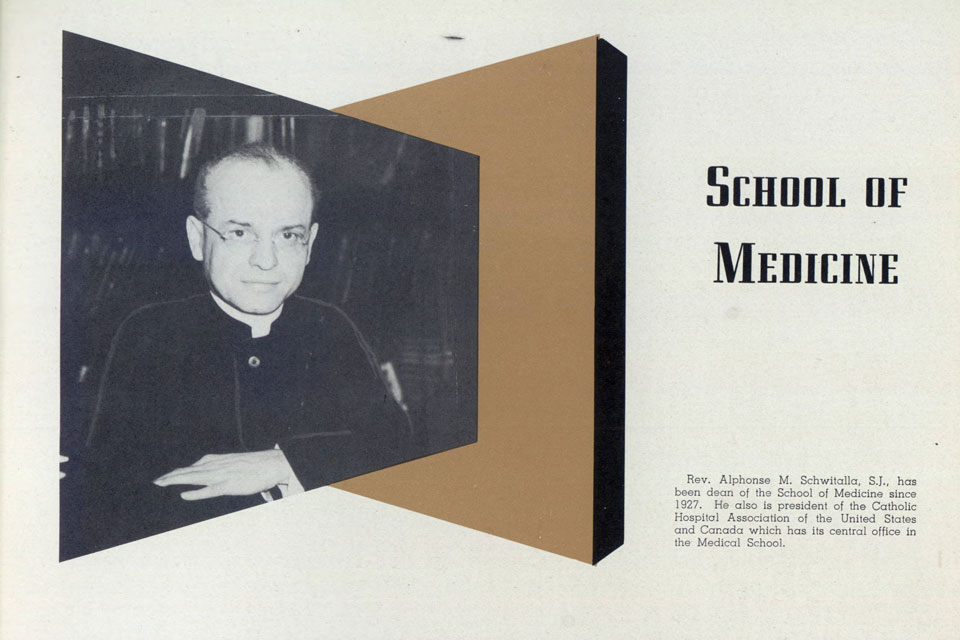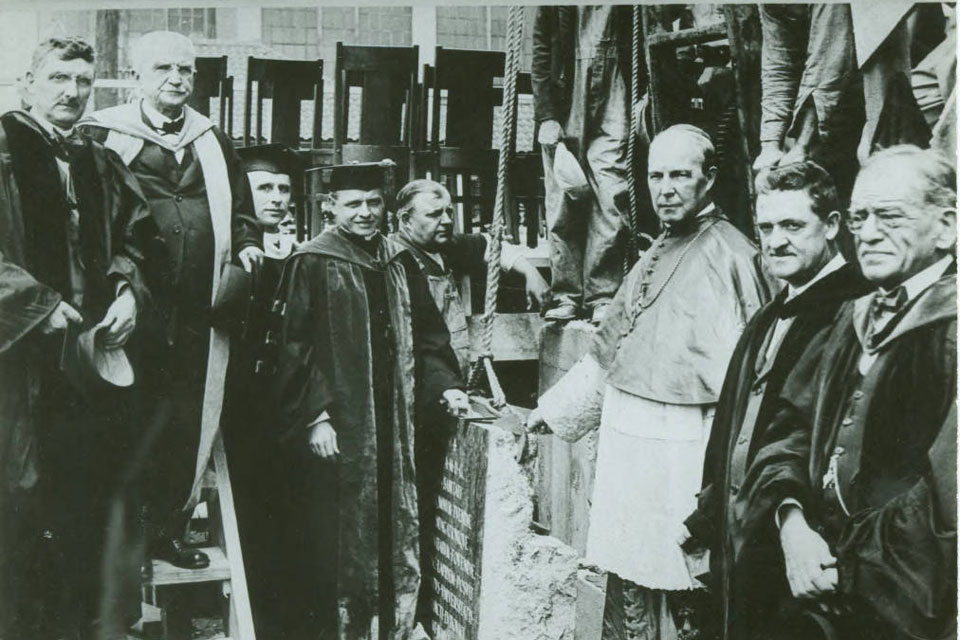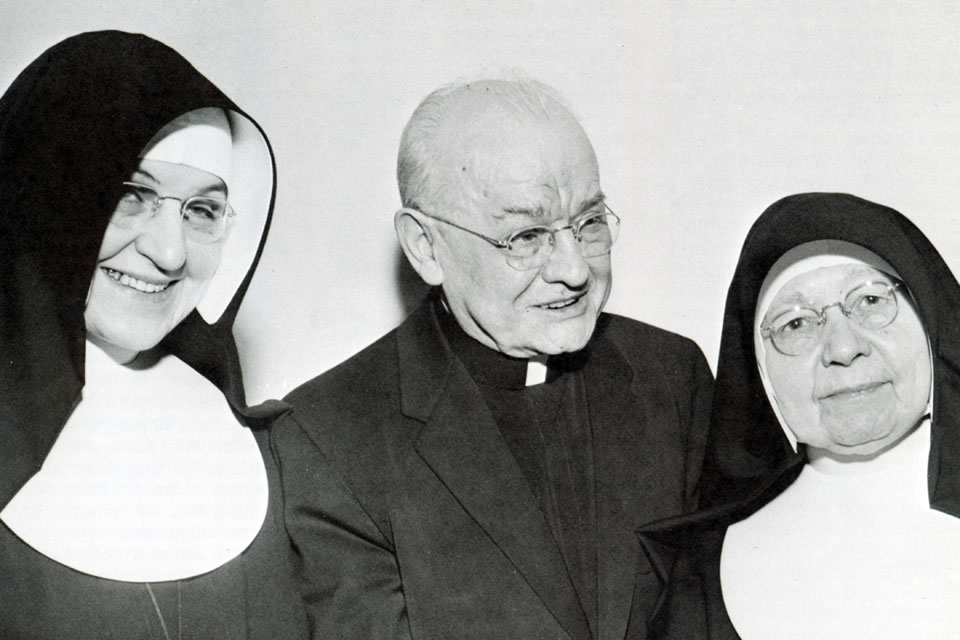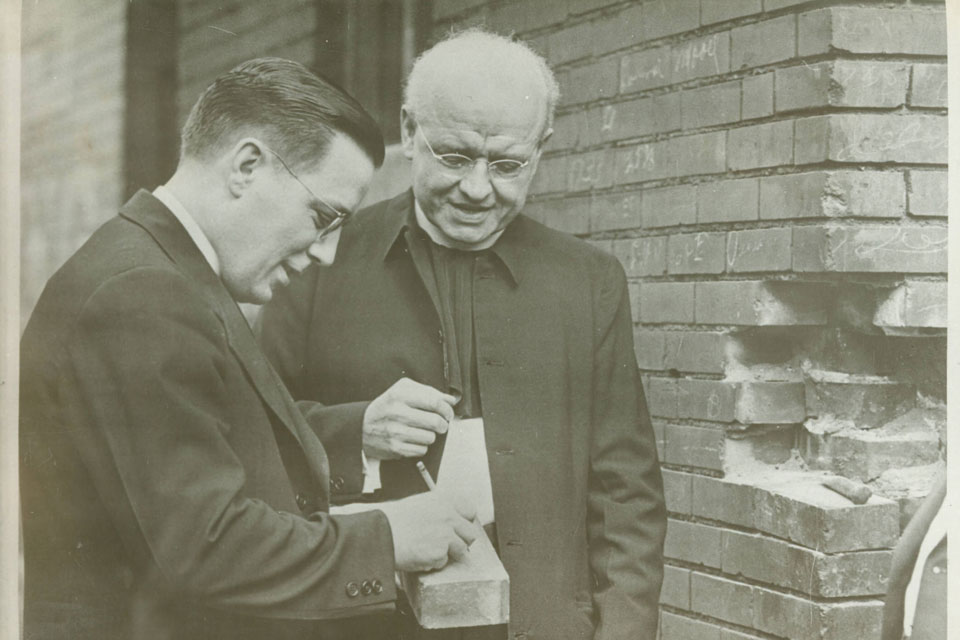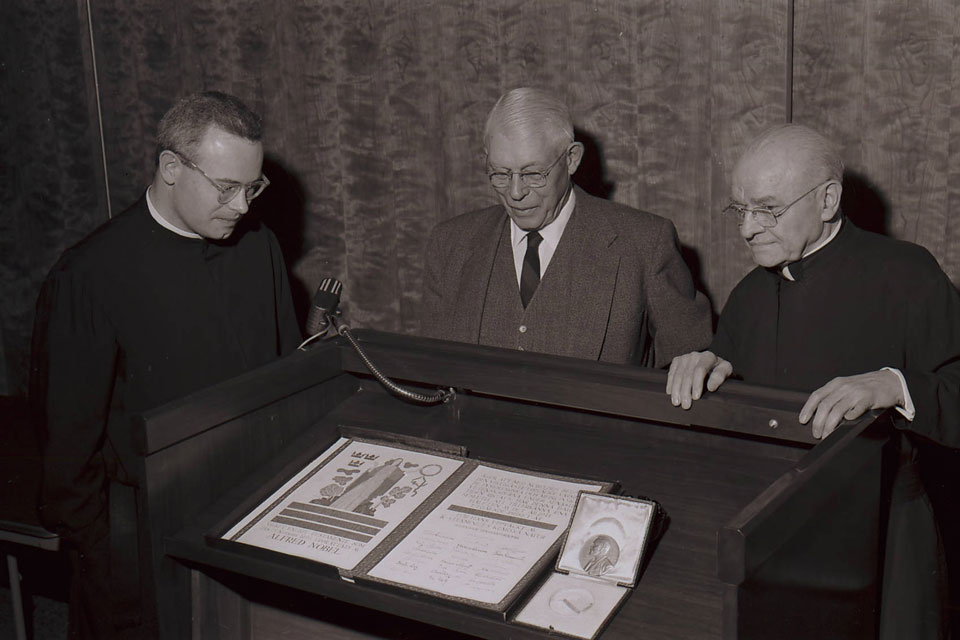SLU Legends and Lore: 'The Crown Prince of Caroline Avenue'
Some called him, “The Crown Prince of Caroline Avenue,” due to his “imperious” attitude as leader of Saint Louis University’s School of Medicine.
Internationally renowned as a hospital and medical education authority, Alphonse Schwitalla, S.J. spent decades building an academic empire, one that would train physicians to practice medicine informed by cutting edge research and the Jesuit value of cura personalis.
In his decades as a University leader and faculty expert, Schwitalla won national and international acclaim for his expertise in medical education – without holding a medical degree.
He was such a well-known expert in his own field – biology – that a nationally-renowned attorney listed him among the defense’s expert witnesses in the infamous 1920s court case that pitted evolution against creationism.
A Bookish Boy Furthers His Studies
Alphonse Mary Schwitalla was born in Beuthen, Upper Silesia, Germany, on November 27, 1882, one of six children born to Peter Schwitalla, a tailor, and his wife, Pauline. He moved to St. Louis with his parents, two brothers and three sisters when he was a toddler.
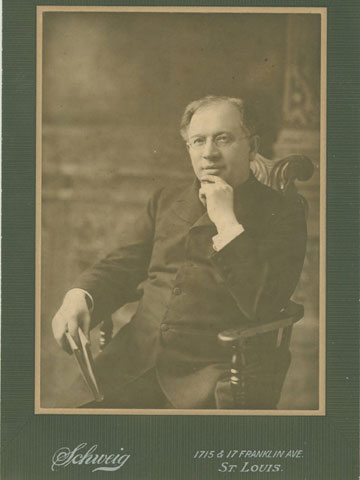
The family was deeply religious, with all three daughters entering the School Sisters of Notre Dame.
Growing up, Schwitalla was noted to be a little "different," voraciously reading books while other children played sports or romped outdoors.
After attending high school, Schwitalla entered the Missouri Province of the Society of Jesus just before his 18th birthday in July 1900. He received his A.B. degree from Saint Louis University in 1907 and his A.M. degree from SLU in 1908. He was ordained a Catholic priest in 1915.
After obtaining his own degrees, Schwitalla taught chemistry and biology at three different Jesuit colleges, before being sent to study at the Johns Hopkins University in Baltimore’s biology department in 1918.
Schwitalla, like fellow SLU Jesuit James Macelwane, was part of a group of young Jesuits who were being sent to the finest “secular” universities in the country for their graduate training. Schwitalla received his doctorate in zoology from Johns Hopkins in 1921 and was the first member of the Society of Jesus to study at the prestigious Maryland university. Johns Hopkins would later list him as one of its most distinguished alumni, and as "one of the five leading medical instructors in the United States."
A Billiken Returns Home to Build an Educational Empire
After returning to SLU as an associate professor of biology, Schwitalla soon found himself director of the department. Shortly after, he became regent of the School of Medicine in 1924.
Three years later, Schwitalla had ascended to the medical school’s deanship, a position he would hold until his retirement in 1948. He also held leadership roles as a regent of SLU’s School of Dentistry (now the Center for Advanced Dental Education); as acting dean of the Graduate School; and dean of the School of Nursing (now the Trudy Busch Valentine School of Nursing). Schwitalla spearheaded the creation of the School of Nursing in 1928.
In 1926 Schwitalla organized the Corporate Colleges of Saint Louis University, a union of nine area Catholic women’s colleges with the University that allowed these smaller women’s schools to increase their academic level and standing.
That same year he also set up the Department of Medical Social Service, and a year later, he oversaw the reconstruction of the School of Medicine in 1927.
As part of his leadership of SLU’s medical enterprise, Schwitalla established the St. Mary's Group of Hospitals in 1924. The hospital group included St. Mary's Infirmary, St. Mary's Hospital, and Mount St. Rose Sanatorium. The three institutions were collectively known as the University Hospital. Medical and educational activities at the three sites were under the control of the University, while most of the staffing was overseen by the Sisters of St. Mary.
In 1933 the newly completed Firmin Desloge Hospital became the chief teaching center of the University's Medical School. In the 1948 "The Interpretative Statement of the Firmin Desloge Hospital," Schwitalla was said to have been instrumental in the development of the Firman Desloge facility (now SSM Health Saint Louis University Hospital), and the move to open St. Mary’s Infirmary, located at Fifteenth and Papin Streets, to African-American patients.
The 1948 report described Schwitalla and his chief partner, Mother Mary Concordia of the Sisters of St. Mary as "larger than life."
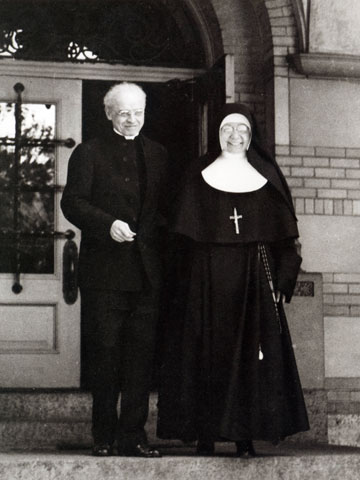
In 1948 he put through the expansion of the School of Medicine’s main building.
Schwitalla’s Leadership Cements SLU’s Medical Prestige
Schwitalla rose to prominence as one of the most widely known medical educators in the country.
Beyond his impact on St. Louis’s medical landscape, Schwitalla held numerous appointments in the American Medical Association (AMA). As part of the AMA, he coauthored a well-known minority report to the study on the costs of medical care undertaken by the organization between 1928 and 1933, defending the traditional doctor-patient relationship against what he viewed as the dangerous encroachment of government regulation.
He also helped to evaluate the nation's medical schools in the report "Medical Education in the United States," researched by the AMA between 1934 and 1939.
Nationally, he served as president of the Catholic Hospital Association of the United States and Canada from 1928 to 1947. From 1928 to 1947 he edited Hospital Progress, the journal of the Catholic Hospital Association.
The Expertise to Defend Scientific Education
Schwitalla was in demand as a conference speaker internationally and wrote more than 100 papers on biology, medical ethics, medical and nursing education, social hygiene, hospital administration and the position of the physician in society.
In 1925 the renowned defense attorney Clarence Darrow, representing high school science teacher John Scopes in the infamous "Scopes Monkey Trial" in Tennessee, invited the SLU Jesuit to serve as an expert witness on evolution. Although it was not necessary for him to appear at the trial – the presiding judge barred Darrow’s extensive experts list from the stand – Schwitalla was prepared to testify in support of the high school teacher who taught his students the theory of evolution.
In 1948, Schwitalla became the first non-physician to receive the certificate and gold medal of the American Medical Association for "outstanding effort for the public welfare on a national level."
Continuing to Champion Others to the End
As he aged, Schwitalla’s health declined. In October 1941 he underwent an operation to relieve pressure on his spinal cord which was causing him some discomfort, and barely six months later, in April 1942, he was seriously injured in an automobile accident while on his way to Columbia, Missouri, to deliver a speech.
His health issues prevented Schwitalla from realizing a dearly held, private wish – to serve as a chaplain for the 70th General Hospital, an overseas hospital unit for World War II being organized by the University. Due to his back problems and the accident, he could not go.
Instead, Harry Crimmins, S.J., then-president of SLU, resigned his position as University president to serve as the unit’s chaplain. Behind the scenes, however, Schwitalla was the driving force behind organizing the unit that eventually cared for soldiers wounded in North Africa and Italy.
Learn the Legend of SLU's 70th Hospital Unit
The storied medical school dean would also be able to celebrate SLU’s first Nobel Prize winner, Edward A. Doisy, Ph.D., in 1943.
In October 1948 Schwitalla suffered a severe stroke that left him practically bedridden for the next six years. However, he roused himself enough to draft a younger Jesuit into taking him to see off a group of School Sisters of Notre Dame at St. Louis’s Union Station as the women prepared to journey to Occupied Japan to form a mission. In seeing them off, he implored them to follow the spirit of the great Jesuit missionary, Francis Xavier.
On May 25, 1965, the 82-year-old "Crown Prince of Caroline Avenue," died at St. Mary’s Hospital, cared for by SLU physicians and the Sisters of Mary. Today, Billiken medical students and SLUCare physicians still practice at the site – now known as SSM Health St. Mary’s Hospital.
As members of the storied medical community created along Caroline Street (the true name of the street where Schwitalla held court), much of their learning and research takes place in Schwitalla Hall, the building named in the pioneering dean’s honor.
After 200 years, there are many legends and untold tales hiding in the nooks and crannies of Saint Louis University. Delve into the myths, fables, fantastic lives, moments and surprises you will find in its story with “SLU Legends and Lore.”
Story based on the "SLU Legends and Lore" Bicentennial Series by John Waide, University archivist emeritus. Written by Amelia Flood, University Marketing and Communications.


















